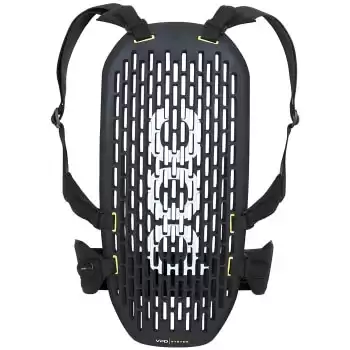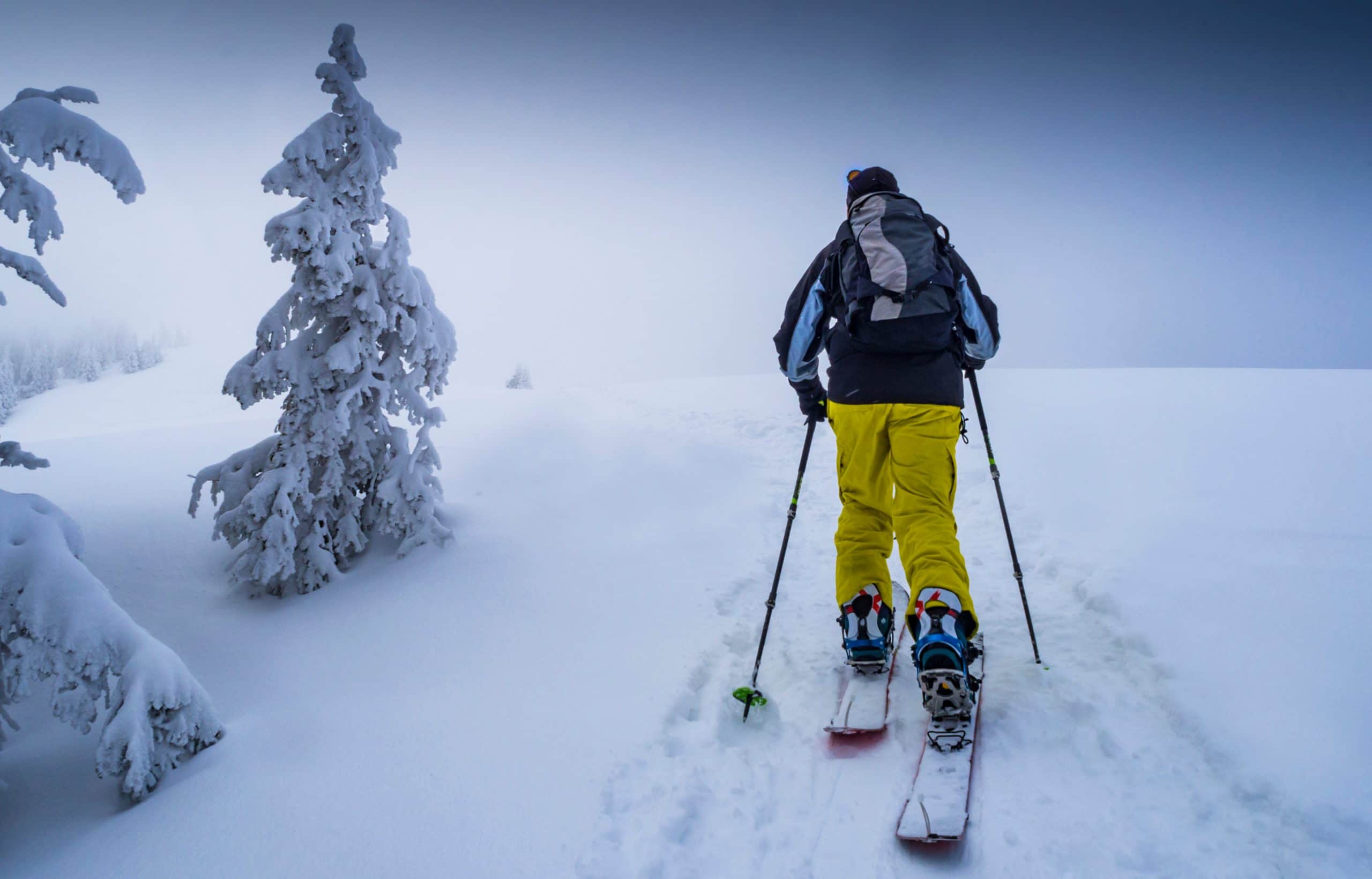Like all action sports, snowboarding comes with some inherent risks, and whilst no one wants to hurt themselves, the risk of doing so is what makes snowboarding exhilarating! So how do you keep safe whilst still keeping it fun? Firstly, make sure you have the right snowboard setup, and secondly wear protective gear. But what are the most important bits of kit to keep you safe?
Is snowboarding dangerous?
I’ve been teaching snowboarding for over 10 years now, and in that time I’ve had to call the ski patrol twice! So if you do it right and at your own pace snowboarding doesn’t need to be that dangerous. However there are still lots of injuries every day on the mountain, so what parts of the body are you most likely to hurt and what needs protecting?
According to this study, snowboarders are more likely to hurt themselves compared to skiers and are most likely to injure their wrist accounting for 28% of all injuries. Then shoulders and soft tissue injuries, ankle injuries and concussions.
If you are just starting out and learning to snowboard then its definitely a good idea to wear some protection; not only will it keep you safe but will also help you build your confidence and enable you to learn faster!
Wear a helmet
Let’s start with the obvious one. Wear a helmet! Hitting your head is bad, concussions are bad so wearing a helmet is a no brainer. Back in the day wearing a helmet when snowboarding was kind of looked down upon and seen as uncool. Over the years this this has continued to change, with a few high profile accidents such as Kevin Pierce and Michael Schumacher although tragic, have definitely helped to change opinions and now you’ll see more snowboarders wearing helmets than not.
When buying a helmet make sure it fits well, is properly adjusted and doesn’t move around on your head. You should also make sure it meets, at least all the minimum safety requirements, read our helmet buying guide to make sure you are properly protected
Other benefits of wearing a helmet is that you don’t lose your beanie and goggles when you crash, this is particularly useful in powder.
Wrist guards
Wrist guards are definitely a good idea if you’re just starting out snowboarding. As anyone who has ever spent more than 5 minutes on a snowboard will tell you – catching edges can really ruin your day! Catching your toe edge means falling forward and this can easily result in a sprained wrist. I’ve been teaching people to snowboard and whilst no one has ever broken their wrist, lots of people have sprained their wrist. Even if this is only a minor injury it’s often still enough to give you ‘the fear’.
Learning to snowboard is all about confidence and not being afraid. If you’ve already got a sore wrist then it’s really hard to get past this and focus on what you’re supposed to be doing, slowing down the learning process.
Wrist guards are great but they do make it difficult to use your hands for doing up your bindings or getting things out of your pockets, the writs guards above are all pretty low profile so don’t get in the way too much, the other option is to buy gloves with inbuilt protection. These are much easier to get on and off than separate gloves and guards but they can moves around a bit and are possibly not quite as effective as wrist guards.
Snowboard knee pads
There are two ways people tend to fall when they catch their toes edge: either onto their wrists or onto their knees. If you’re a ‘knee faller’ then you’ll be needing a set of knee pads! Especially when conditions are a bit icy knee pads are a great idea and can save from bruised knees from even the smallest of falls.
Knee pads won’t do much to protect your knees from the more serious injuries from twisting and heavy landings which can result in ACL and other ligament damage. But they will definitely save you from the smaller painful falls. I’ve got friends with bad knees who wear them every day just to stop little knocks and to keep the knees warm and add a bit of support.
Being able to move freely is just as important as protection so try and get a pair which are as low profile as possible and fit well so that you won’t even realize you’ve got them on!
Best knee pads for snowboarding
Impact shorts
Another injury which is common to snowboarding is the busted tailbone! Whilst most of the time this is not a serious injury it sure does ruin your day! Falling on your butt is an inevitable part of the sport so impact shorts are always a good idea. Not just for beginners, wearing padded shorts will also save your tailbone from falls in the snowpark and on rails and help give you confidence to try new tricks.
One basic rail trick many people struggle with is learning to boardslide. It’s a real head game, and you can get into a vicious circle where the more nervous you get about trying the trick, the more you lean back, meaning you’re more likely to fall on your butt and that makes you more nervous! So its kind of ironic, but wearing impact shorts can give you more confidence and actually make it less likely for you to fall on your butt!
A good pair of well fitting impact shorts should be almost invisible under your snowboard pants. I personally would not get ones with too much solid plastic padding as these can also be painful if you fall on the wrong spot!
Best impact shorts for snowboarding
Goggles
If you’re going to be up on the mountain all day then it’s really important to protect your eyes. On the snow the effect of the sun’s UV rays is made worse by the reflection back off the snow. Although you can wear sunglasses on a sunny day they are no good if the weather turns bad and it starts to snow. Having little snowflakes bounce off your eyeballs kind of makes it harder to see where you’re going, so it’s best to opt for goggles.
I would suggest that goggles is one area where it’s worth spending a bit of money. Cheap goggles tend to fog up, especially on bad weather days when there’s moisture in the air and you are working hard getting hot.
If you ride with a backpack or if you’ve got room in your pockets then it’s always worth throwing in a pair of sunglasses, spare goggles or spare lens. That way you can swap them if they fog up or get full of snow when you wipe out!
2020 Snowboard google buying guide
Gloves
Gloves or mittens are essential items which every snowboarder need. They not only protect your hands from the cold, they also protect you from the snow in an event of a fall. Snow and ice can produce pretty nasty ice burns or cuts.So even in the spring when the weather is warm you definitely need some gloves, especially when you are learning.
2021 Snowboard Gloves/Mitts buying guide
Back protectors
Whilst back injuries are rare in snowboarding they can be serious. Wearing a back protector will save you from certain types of back injury which are caused by large impacts.
That said there are still good reasons to wear one:
Protect from impacts
The most obvious reason to wear a back protector. Whether you’re just starting out, in the backcountry or shredding the park. A heavy landing on your back can do you serious damage.
Allow you to fall properly
If you’ve ever made a snow angel in the powder you’ll know the feeling of falling backward with full confidence of a nice soft landing. This is how you should fall the whole time, but if you think you’re going to hurt yourself then you freak out and stiffen up. So wearing a back protector can let you fall with confidence, relax and distribute the impact across your whole back. This can not only save you back but also your butt/wrists/collar bone or whatever other part of your body you instinctively put in harm’s way
Protect from rocks in the backcountry
No matter how much pow there is there will always be things to run into. Whether it be rocks, lumps of ice or tree stumps a pretty minor fall can lead to a big injury. A back protector can save you from all of these, in fact they are compulsory (along with a helmet) on the Freeride World Tour
Protect from other skiers/snowboarders running into you
Skiers/snowboarders crashing into each other is one of the biggest causes of injury, especially during the holidays when the slopes are packed.
A word of caution:
Risk compensation is a theory which suggests that people typically adjust their behavior in response to the perceived level of risk, becoming more careful where they sense greater risk and less careful if they feel more protected.
Back in the day, I used to only wear a helmet when I was trying a new trick in the park, meaning that when I wasn’t wearing a helmet I rode more within my ability and was probably less likely to hurt myself. I would suggest only wearing the protection that you feel you really need so that you don’t feel like Robocop and start sending it off everything in sight.
Also, try and wear it every time you go up the mountain so that it becomes habitual and you don’t start feeling invisible on the days that you do wear it. Although accidents always happen, the best way to stay safe is to know what you’re doing and use your head!












